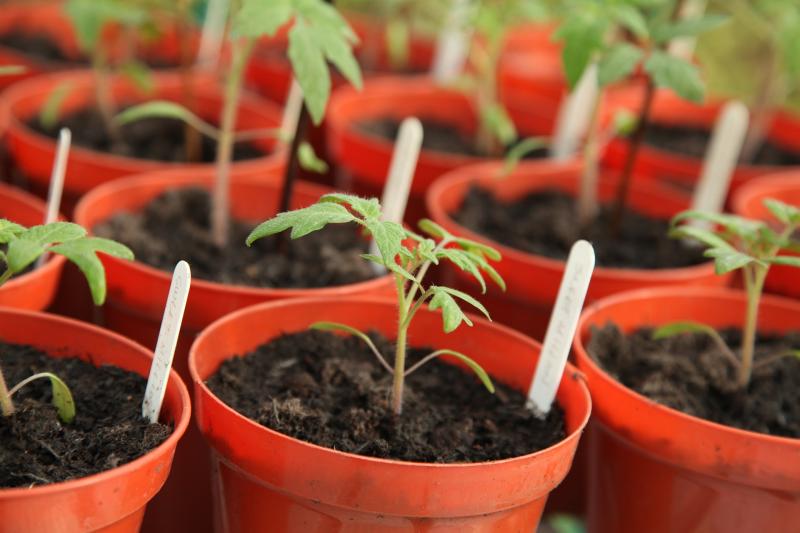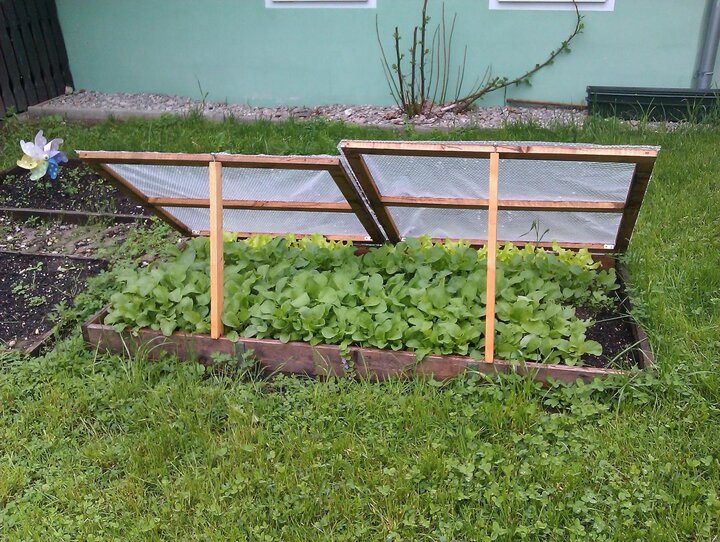Sarah Browning, Nebraska Extension Educator

Give plants a good start by hardening them off before planting them outside.
The garden centers beckon and planting season has begun. Many gardeners have already started planting seeds of cold-hardy crops like carrots, radishes and lettuce, and ornamentals like peonies. But if you've purchased transplants for your garden, or grown them yourself, make sure you get them off to a good start by hardening them off before planting them outside.
Spring Weather Can be Hard on New Plant
Outdoor conditions are very different than greenhouse growing conditions. Transplants need time to adjust to these changes so you don't lose plants or stunt them due to large amounts of damage. Factors causing problems to new transplants include cold temperatures, wind, lower amounts of water and strong sunlight.
Cold spring weather is a given, so it's important garden transplants are prepared for the colder temperatures they face once planted outside. Transplants grown indoors or in a greenhouse are very susceptible to damage if suddenly exposed to cold outdoor conditions.
Wind is also responsible for much damage to early season transplants. Strong spring wind can rip or tear leaves, or snap stems. But even relatively low wind picks up small soil particles and throws them against the leaves and stems of new young plants. This type of damage is similar to sand blasting. Leaf and stem cells are scratched and damaged, leading to greater moisture loss and tissue death.
During the early stages of growth, transplants are given ideal conditions for growth including water whenever they needed it. Once outside, transplants experience conditions causing them to lose water faster, including heat, sunlight, and wind.
Finally, outdoor sunlight is often more intense than light provided by grow lights or in a greenhouse. It can easily cause sunburn to the leaves of plants that are not hardened off.
What Happens During Hardening Off
The goal of hardening off is to cause plant cell walls to thicken, changing soft, succulent growth to firmer, harder tissue. Hardening off causes the following changes in plant growth and development.
- Plant growth slows.
- Natural waxes on leaf surfaces thicken as plants are exposed to more sun, reducing the rate of water loss.
- Cell walls develop more lignin to strengthen them.
- The amount of freeze-prone water in plant cells is reduced.
- The amount of carbohydrates (stored food reserves) in plant tissues increases.
- More rapid root development is stimulated.
The Hardening Off Process
Harden your plants off gradually, over a 7-10 day period. Ideally, start the process on a mild or cloudy day. Place plants outside in a shaded location for 2-3 hours, sheltering them from strong wind. Move the plants back inside at the end of this time.
Each day, gradually increase your plant's time outside and their sun exposure by a few additional hours. At the same time, gradually reduce how often you water then, but don't allow the transplants to wilt. After several days of 10 to 12 hours outside, leaved the plants outside for 24 hours a day for a couple days. At this point, your plants are ready for transplanting.

A cold frame can be used to harden off your plants. They are protected from cold temperatures during the evening and opening the cold frame allows them to experience outdoor conditions.
Know the relative hardiness of your plants. Hardy cool season plants can take temperatures in the 40's. After they are well hardened off, light frosts won't hurt them. Warm-season plants prefer warm nights, at least 60 degrees F. They can't stand below-freezing temperatures, even after hardening off. After these minimum night temperatures are exceeded go ahead and place transplants in the garden.
Avoid fertilizing your plants before or during the hardening off process. Once transplants are hardened off and planted outdoors, use a weak fertilizer solution to get transplants growing again and to help reduce transplant shock.
Image above right - A cold frame is a simple structure that can be used to provide some temperature protection and be used to harden off transplants.
Search Our Archive
Associated Video
Digging Deeper Vegetable Gardening
Nebraska Extension Educator John Porter talks about the value and importance of vegetable gardening